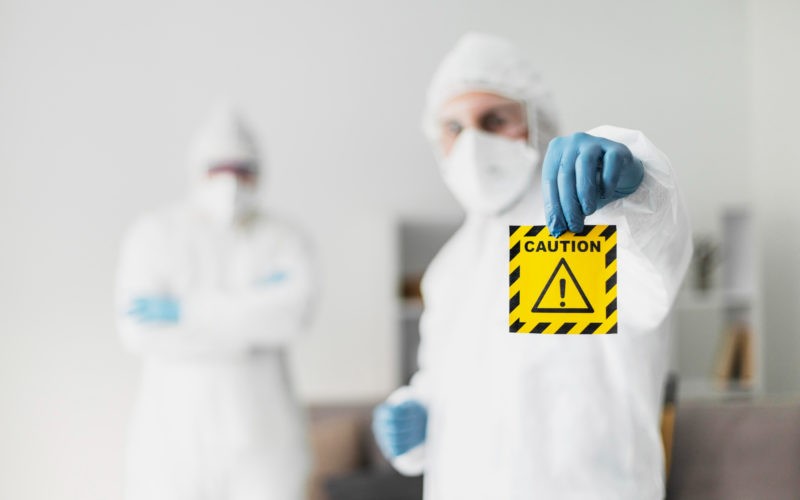Employee health and productivity can be severely affected by exposure to toxic substances in the workplace. Understanding how to detect and control these hazards is essential for creating a safe environment across laboratories, manufacturing plants, warehouses, and even office settings. Effective exposure control not only protects workers but also helps organizations meet legal and regulatory requirements, reducing the risk of fines, liability, and reputational damage.
Identifying and controlling exposure is a continuous process that requires careful evaluation, monitoring, and improvement. Organizations should foster a strong safety culture where employees understand the risks they face and receive proper training to respond effectively. Regular updates to safety procedures, equipment, and training ensure the organization stays prepared as conditions or operations change. By understanding where toxic substances originate and how exposure occurs, companies can significantly reduce health risks and improve overall workplace safety.
Recognizing Hazardous Substances
The first step in managing exposure is identifying the chemicals and materials that pose health risks. Toxic substances may appear in the form of solids, liquids, gases, dust, fumes, or vapors — each with different pathways into the body. Exposure can occur through inhalation, skin contact, ingestion, or eye exposure, making comprehensive identification practices essential.
Labels, safety data sheets (SDS), and chemical inventories are critical references for understanding chemical hazards before they lead to incidents. Regular workplace audits and inspections help uncover overlooked or misplaced materials. Facilities should maintain accurate chemical records, so employees can quickly access important information during emergencies. Tracking chemical usage also makes it easier to identify high-risk areas and implement controls before minor issues escalate.
Monitoring Exposure Levels
Once hazardous substances are identified, exposure levels must be monitored. Personal and environmental monitoring can detect the presence of toxic substances before they reach harmful concentrations. Common monitoring methods include:
- air quality testing
- surface sampling
- biological monitoring
Data from these assessments helps determine whether exposure levels are within safe limits and whether additional controls are necessary.
Regular monitoring also supports regulatory compliance by confirming adherence to permissible exposure limits. These standards help employers determine which engineering controls, ventilation systems, or personal protective equipment (PPE) may be required. Employees should also be trained to recognize symptoms of overexposure — such as dizziness, skin irritation, difficulty breathing, or eye discomfort — and encouraged to report them immediately. Prompt action helps prevent long-term health effects and operational disruptions.
Implementing Engineering Controls
Engineering controls are among the most effective ways to reduce exposure to toxic substances. These measures involve physical modifications to the workplace or processes to minimize exposure, without relying heavily on worker behavior. Examples include:
- local exhaust ventilation
- fume hoods
- enclosed processing systems
- automated equipment to limit manual handling of chemicals
When properly designed and maintained, engineering controls significantly reduce exposure risks while preserving productivity.
Routine maintenance is essential to keep these systems functioning effectively. Filters, exhaust systems, and containment units should be inspected and replaced according to manufacturer recommendations. Spill containment units are also important in areas where spills may occur. When combined with other safety measures, engineering controls create multiple barriers against exposure and significantly reduce risks to employees.
Providing Personal Protective Equipment
PPE is an important second line of defense when engineering controls cannot fully eliminate exposure. Common types of protective equipment include:
- safety goggles and face shields
- respirators
- protective gloves
- chemical-resistant clothing
The type of PPE required depends on the specific hazards present and the tasks being performed. Proper fit and comfort are also important to ensure consistent use.
Employees must be trained to use, maintain, and dispose of PPE properly. Damaged gloves or poorly maintained respirators can create a false sense of security and increase exposure risk. An eyewash station must be conveniently located in areas where chemicals may spill or release harmful vapors, so workers can respond quickly in the event of accidental contact. When integrated into the overall exposure control system, PPE strengthens the protection framework for employees.
Establishing Safe Work Practices
Safe work practices complement engineering controls and PPE by guiding employee behavior around hazardous materials. These practices include:
- proper chemical handling procedures
- secure storage and labeling
- spill prevention and response steps
- standardized operating procedures
Employees should be trained to follow these practices consistently. Even small adjustments — such as reducing the amount of chemical used at one time or separating incompatible materials — can significantly reduce risk.
Regular drills and refresher training help reinforce safe work practices and ensure employees remain alert to potential hazards. When workers understand not just what to do but why it matters, compliance becomes part of daily routine rather than an obligation.
Responding to Exposure Incidents
Even with strong preventive measures, incidents may still occur. A well-structured emergency response plan is essential. It should include:
- containment procedures
- first aid and medical response
- clear communication and reporting steps
Spill containment kits and emergency equipment help prevent hazardous substances from spreading. Quick, effective action — such as using eyewash stations or removing contaminated clothing — can prevent long-term health effects.
Employees must know how to respond without hesitation. Clear communication channels and straightforward reporting procedures allow organizations to analyze incidents, address root causes, and prevent future occurrences.
Maintaining Documentation and Compliance
Accurate documentation plays a major role in exposure control and regulatory compliance. Important records include:
- chemical inventories
- safety audits
- employee training logs
- exposure monitoring reports
These records help organizations identify risks, verify the effectiveness of controls, and demonstrate compliance during inspections.
Regularly reviewing and updating documentation ensures procedures remain aligned with current operations, materials, and regulations. Recording incidents and corrective actions also supports continuous improvement and helps build an organizational memory around safety practices.
Encouraging a Culture of Safety
A strong safety culture is essential for successful exposure management. Employees should feel confident reporting hazards, suggesting improvements, and following safety procedures without fear of punishment. Leadership plays a key role by setting expectations, modeling safe behaviors, and maintaining open communication.
Employee involvement strengthens accountability and drives long-term improvements. Recognition programs, feedback mechanisms, and ongoing education help reinforce positive behavior. When safety becomes a shared organizational value rather than a set of rules, workplaces experience fewer incidents, higher morale, and better operational performance.
Conclusion
Managing exposure to toxic substances requires a combination of identification, monitoring, engineering controls, PPE, and safe work practices. Emergency preparedness, thorough documentation, and a strong safety culture further enhance protection and compliance. By anticipating risks and implementing comprehensive control strategies, organizations can safeguard employee health, reduce operational disruption, and ensure regulatory compliance, creating a safer, more productive workplace.












